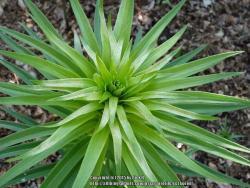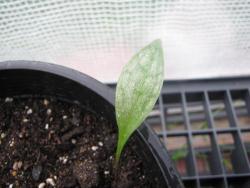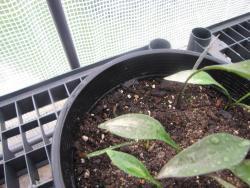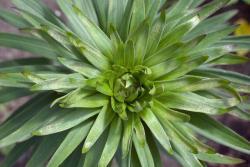
Last spring I bought a few bulbs of 'Eurydice'. There was some leaf damage then, similar to the photos and it's back again this year.
The lower leafs do not exhibit the same damage and the damage wasn't visible at emergence of the shoots. I first noticed it two weeks ago or so.
This cultivar also spreads with new shoots emerging quite some distance from the mother bulbs and these do not yet show visible symptoms.
The really young leafs are somewhat twisted and there are some damage to them, but they have yet to take on the silvery white appearance.
Most of the damage seems to be in the middle of the leaves.
The underside of the leaves looks pretty normal.
I can't see anything crawling around the leaves, yet this looks like damage from a sucking insect. Perhaps a bit looking like thrips damage. There is a possibility that there could be something hidden in the centre where the buds are developing, but it's impossible to see. I did notice a single winged aphid on a leaf one day and I disposed of it, but there is no others visible.
A week ago we had some rather large hails, but this damage was already present and I don't think it should show up too much in the large picture, but in the close up below it could. There is rather shallow depth of field here as I didn't bother to take out a tripod of flash, but I still post it in case it could help:
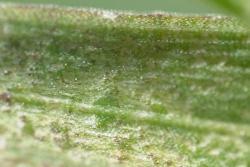
I'd welcome any thoughts on the subject very much.
If anything can be ruled out it would also be most helpful.
For instance I was wondering if this could be foliar nematodes?


